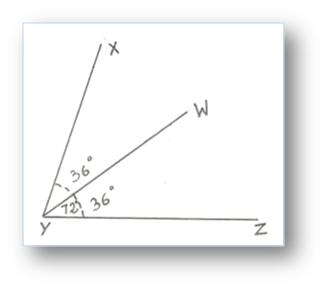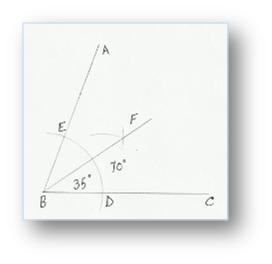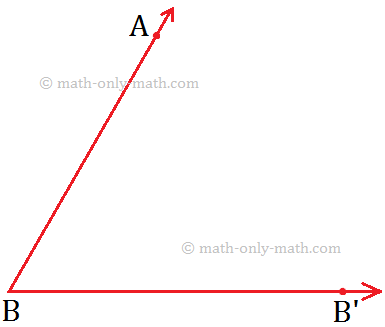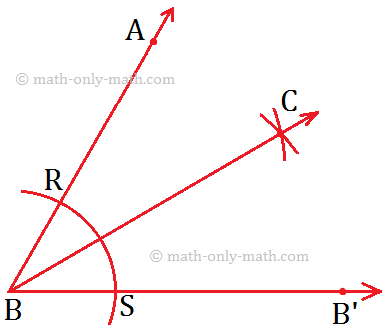Subscribe to our ▶️ YouTube channel 🔴 for the latest videos, updates, and tips.
Bisecting an Angle
Bisecting an angle means dividing it into two equal angles. The ray which bisects an angle is known as its bisector.
(i) By Paper Folding:
∠LMN is the given angles. Fold the paper so that LM falls along MN and press the paper in this position so as to get an impression.
Unfold the paper. Draw the line along the impression.
This line bisects ∠LMN.
(ii) Using a Protractor:
∠XYZ is to be bisected. Measure∠ XYZ with the help of protractor.
Let it be 72°.
We know half of 72° is 36°.
Make ∠XYW = 36°, so that YW falls within ∠XYZ.
Now ∠XYZ is divided into two equal angles by the line YW.
(iii) Using a Compass:
∠ABC is to be bisected. Place the metal end of the compass at B and draw an arc to cut BC at D and AB at E.
Place the metal end at E and D with any convenient radius, draw two arcs (same radius) cutting each other at F.
Join FB.
FB is the bisector of ∠ABC.
Working Rules for Bisect an Angle Using Compass:
To Construct the Bisector of an angle, say ∠ABB'.
Step I: With the vertex B as centre and a suitable radius, draw an arc to cut \(\overrightarrow{BA}\) at R and \(\overline{BB'}\) at S respectively.
Step II: With R as centre and a radius more than half of RS, draw
an arc.
Step III: With S as centre and the same radius as in step II, draw another arc to cut the previous arc at C.
Step IV: Join B and C.
Now, \(\overrightarrow{BC}\) is the required bisector of angle ∠ABB'.
● Angle.
Interior and Exterior of an Angle.
Measuring an Angle by a Protractor.
Construction of Angles by using Compass.
Geometry Practice Test on angles.
From Bisecting an Angle to HOME PAGE
Didn't find what you were looking for? Or want to know more information about Math Only Math. Use this Google Search to find what you need.







New! Comments
Have your say about what you just read! Leave me a comment in the box below. Ask a Question or Answer a Question.